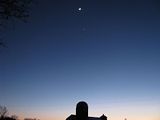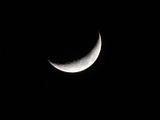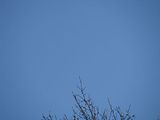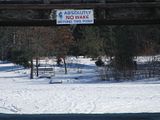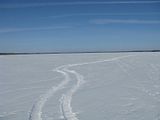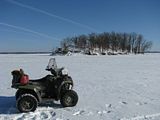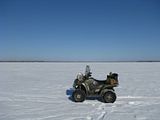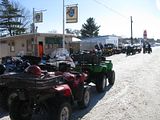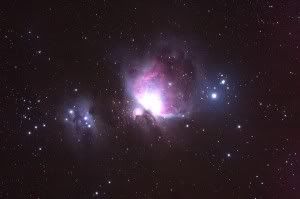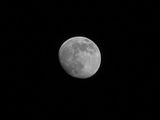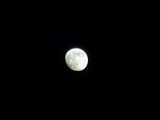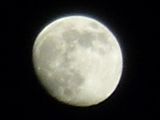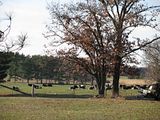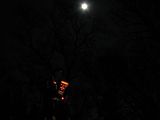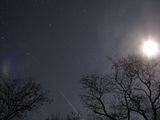The Georgia Guidestones
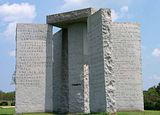
The Georga Guidestones are located in Elbert County, Georgia, approximately 90 miles (145 kilometers) east of Atlanta, and 9 miles (15 kilometers) north of the center of Elberton. The monument is situated on a rise a short distance to the east of Georgia Highway 77 (Hartwell Highway), and is visible from that road. Small signs beside the highway indicate the turnoff for the Guidestones, which is identified by a street sign as "Guidestones Rd."
The Georgia Guidestones are a huge granite monument located on a hilltop in Elbert County, Georgia, USA. It is sometimes referred to as the "American Stonehenge," a title that has been applied at times to a number of other structures, including Mystery Hill.
A message comprised of ten guides or commandments is inscribed on the monument in eight modern languages, and a shorter message is inscribed at the top of the structure in four ancient scripts.
The monument is almost twenty feet tall, and made from six granite slabs that weigh more than 100 tons. One slab stands in the center, with four arranged around it.
A capstone lies on top of the five slabs, which are astronomically aligned.
An additional stone tablet, which is set in the ground a short distance to the west of the monument, provides some clarifying notes on the history and purpose of the Guidestones.
The stones are placed so that a slit at eye level in the central upright slab permits an observer to view the eastern horizon and aligns with the position of the rising sun at the Summer and Winter Solstices. Through the center stone, from south to north, a two-inch diameter hole is inclined at an angle of 34 degrees and points to the North celestial pole. A beam of sunlight passing through a hole in the capstone forms a spot of light below. The position of the spot can be used to determine high noon and the day of the year.
The eye-level, oblique hole is drilled from the South to the North side of the center, Gnomen stone, so that the North Star is always visible, symbolizing constancy and orientation with the forces of nature.
A slot is cut in the middle of the Gnomen stone to form a window which aligns with the positions of the rising sun at the Summer and Winter Solstices and at the Equinox, so that the noon sun shines to indicate noon on a curved line.
The cap stone includes a calendar of sorts, where sunlight beams through a 7/8 inch hole at noon, and shines on the South face of the center stone. As the sun makes its travel cycle, the spot beamed through the hole can tell the day of the year at noon each day. Allowances are made because of variations between standard time and sun time to set the beam of sunlight at an equation of time. The site was chosen because it commands a view to the East and to the West and is within the range of the Summer and Winter sunrises and sunsets. The stones are oriented in those directions.
History
The story behind the guidestones is as mysterious as the monuments themselves. In June 1979 a well dressed, articulate man walked into theoffice of the Elberton Granite Company in Elberton, Georgia and said that he wanted to know the cost of building a large monument to the conservation of humanity. He identified himself as Mr. R. C. Christian and said that he represented a small group of Americans who wished to remain anonymous.
Altough Elberton is considered the granite capital of the United States, the president of the granite company was skeptical of undertaking a project of this magnitude and very skeptical of the stranger in his office. He asked Mr. Christian to speak to the company's banker, Mr. Wyatt Martin, thinking that would be the last he saw of him.
However, Mr. Christian went to the bank and explained to Mr. Martin that although his name was a pseudonym with symbolic meaning, he and the group he represented were very serious about erecting these guidestones for, "the conservation of the world and to herald the coming age of reason. Should there be a holocaust in the civilized world, the group wished the guidestones to be one of the most enduring things to help humanity start anew.
Mr. Martin agreed to handle the funds and after an escrow account was set up, work began on the monument. Skilled workers quarried and cut the blocks, others sandblasted the message in 4" high letters, and still others hauled them to a hillside 7 miles north of Elberton where they were astronomically aligned with the North celestial pole, the noonday sun, and the rising and setting points of the sun and moon on the horizon.
A year after completion of the project the final correspondence arrived in Elberton from R. C. Christian and the group responsible for the guidestones. So far no one knows who this mysterious group is or why they felt compelled to erect the Georgia Guidestones and its message for mankind.
Controversy: A California man named John Conner has called for the Guidestones to be removed from public property saying they are an occult monument. He believes the name "R.C. Christian" is actually a reference to Christian Rosenkreuz, the supposed founder of the Rosicrucians, a secret society dating back to the 15th century.
A message consisting of a set of ten guidelines or principles is engraved on the Georgia Guidestones in eight different languages, one language on each face of the four large upright stones. Moving clockwise around the monument from due north, these languages are: English, Spanish, Swahili, Hindi, Hebrew, Arabic, Chinese and Russian. The message in English reads:
* Maintain humanity under 500,000,000 in perpetual balance with nature.
* Guide reproduction wisely improving fitness and diversity.
* Unite humanity with a living new language.
* Rule passion, faith, tradition, and all things with tempered reason.
* Protect people and nations with fair laws and just courts.
* Let all nations rule internally resolving external disputes in a world court.
* Avoid petty laws and useless officials.Balance personal rights with social duties.
* Prize truth, beauty, love, seeking harmony with the infinite.
* Be not a cancer on the earth. Leave room for nature. Leave room for nature.
A shorter message appears on the four vertical surfaces of the capstone, again in a different language and script on each face. The explanatory tablet near the Guidestones identifies these languages/scripts as Babylonian Cuneiform (north), Classical Greek (east), Sanskrit (south), and Egyptian Hieroglyphics (west), and provides what is presumably an English translation: "Let these be guidestones to an age of reason."
A few feet to the west of the monument, an additional granite tablet has been set level with the ground. This tablet identifies the monument and the languages used on it, lists various facts about the size, weight, and astronomical features of the stones, the date it was erected, and the sponsors of the project. It also speaks of a time capsule buried under the tablet, but the positions on the stone reserved for filling in the dates on which the capsule was buried and is to be opened are missing, so it is not clear whether the time capsule was ever put in place.
The tablet is with one edge to each of the cardinal directions, and is inscribed such that the northern edge is the "top" of the inscription.The complete text of the explanatory tablet is detailed below.
The image abive shows the overall layout. The tablet is somewhat inconsistent with respect to punctuation, and also misspells "pseudonym." The original spelling, punctuation and line breaks in the text have been preserved in the transcription that follows.
The text of the tablet is as follows: At the center of each tablet edge is a letter representing the appropriate compass direction (N, S, E, W), contained within a small circle.
At the top center of the tablet is written:
THE GEORGIA GUIDESTONES
CENTER CLUSTER ERECTED MARCH 22, 1980
Immediately below this is the outline of a square, inside which is written:
LET THESE BE
GUIDESTONES
TO AN AGE
source....
